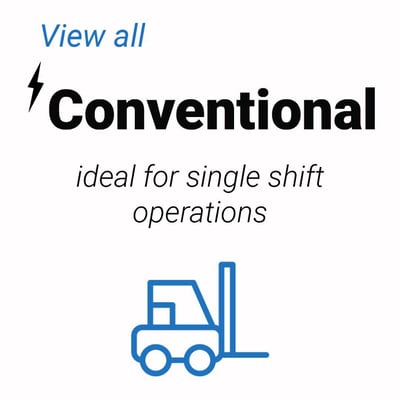
Innovations Driving Industrial Batteries Efficiency
Industrial batteries play a crucial role in powering various sectors, from manufacturing to logistics. As industries evolve and demand for energy-efficient solutions increases, innovations in battery technology are paving the way for improved performance, longevity, and sustainability. In this article, we will explore the groundbreaking advancements driving industrial battery efficiency, specifically focusing on forklift batteries and their significant impact on the industry.
Innovations Driving Industrial Batteries Efficiency
The landscape of industrial batteries is rapidly changing due to technological advancements and increasing environmental concerns. Innovations driving industrial batteries efficiency encompass a variety of factors, including chemistries, charging technologies, and battery management systems.
Advanced Battery Chemistries
One of the most notable innovations in industrial battery technology is the development of advanced battery chemistries. Traditional lead-acid batteries have long been the backbone of industrial applications, particularly in forklifts. However, newer chemistries are revolutionizing how these batteries perform.
- Lithium-ion (Li-ion) batteries have gained immense popularity due to their high energy density and longer life cycles. Unlike lead-acid batteries that require frequent maintenance, Li-ion batteries are virtually maintenance-free and can last up to twice as long. This translates into lower operational costs for businesses.
- NMC batteries blend nickel, manganese, and cobalt to optimize performance across various applications. They offer a balance between energy density, thermal stability, and cost-effectiveness—making them ideal for heavy-duty vehicles like forklifts.
- Emerging technologies such as sodium-ion batteries promise similar capabilities to lithium-ion but at a significantly reduced cost and with a lower environmental impact. These batteries are particularly attractive given the growing concern over lithium supply chains.
Smart Charging Technologies
Another vital area of innovation is smart charging technologies designed to 72 volt flat plate forklift batteries optimize battery performance while reducing downtime.
-
Fast Charging Solutions: Fast charging systems can replenish forklift batteries in a matter of minutes instead of hours. This not only enhances operational efficiency but also enables companies to maximize their fleet's productivity without extended downtimes.
-
Bidirectional Charging: Bidirectional charging allows batteries to discharge energy back into the grid or facility when needed. This capability can help stabilize electrical grids while providing additional revenue streams for businesses using forklift batteries.
-
Charging Infrastructure: The modernization of charging infrastructure plays an essential role as well. Implementing IoT-enabled chargers can allow for real-time monitoring and analytics on battery health—ensuring timely maintenance interventions and preventing unexpected failures.
Battery Management Systems (BMS)
A 18 volt flat plate forklift batteries robust Battery Management System (BMS) can make all the difference when it comes to maximizing efficiency in industrial applications.
-
Monitoring Battery Health: BMS technology continuously tracks factors like temperature, voltage levels, and charge cycles—enabling operators to identify anomalies early on before they escalate into significant issues.
-
Predictive Maintenance: With machine learning integrated into BMS solutions, predictive analytics can forecast potential failures based on historical data trends. By addressing these concerns proactively, companies can avoid costly downtime associated with unexpected equipment failure.
Sustainability Initiatives
As industries increasingly focus on sustainability goals, innovations driving industrial battery efficiency align closely with green initiatives:
-
Recyclability: Newer battery designs prioritize recyclability at end-of-life stages—a move that reduces environmental impacts while promoting sustainable practices within enterprises using forklift batteries.
-
Second-Life Applications: Once retired from primary use in forklifts or other vehicles, many modern lithium-ion batteries still have substantial capacity remaining. Innovative solutions are emerging where these used batteries can be repurposed for stationary storage applications—supporting renewable energy integration while extending overall product lifecycles.
Applications Across Industries
The advancements discussed above apply not just to forklifts but also extend across various sectors:
Manufacturing: High-efficiency industrial batteries power assembly lines while reducing electricity costs through smart management practices.
Logistics: Automated guided vehicles (AGVs) equipped with advanced battery technologies ensure seamless transportation of goods in warehouses and distribution centers.
Construction: Heavy machinery utilizing innovative battery systems contribute towards cleaner job sites by reducing emissions compared to traditional fossil-fuel powered equipment.
Renewable Energy Storage: Efficient industrial battery systems hold promise for storing renewable energies like solar or wind power—facilitating smoother transitions onto electric grids during peak demands.
FAQs about Innovations Driving Industrial Batteries Efficiency
1. What types of batteries are commonly used in forklifts?

2. How do lithium-ion forklift batteries compare with lead-acid?
Lithium-ion forklift batteries offer longer lifespans (up to twice as long), require less maintenance, charge faster than lead-acid alternatives but come at a higher initial investment cost.
3. What is the lifespan of an industrial battery?
The lifespan varies depending on chemistry; lead-acid typically lasts around 3–5 years while lithium-ion models can last upwards of 10 years with proper care!
4. Are there any safety concerns associated with modern battery technologies?

5. Is it worth investing in advanced charging technologies?
Absolutely! Investing in fast-charging or smart charging infrastructure optimizes usage time leading directly towards increased productivity—paying off investments quickly!
6. How do innovations in recycling benefit businesses?
Innovative recycling processes reduce waste disposal costs while promoting sustainable practices that enhance brand reputation among environmentally conscious consumers!
Conclusion
In summary, innovations driving industrial batteries efficiency are reshaping how industries approach power solutions today—from advanced chemistries enhancing performance metrics through smart technologies enabling better management strategies—all working together towards achieving sustainability goals! As more companies adopt these cutting-edge solutions such 36 volt flat plate forklift batteries as efficient forklift battery options—they’re not just gaining operational advantages; they’re also positioning themselves favorably against competitors looking towards greener futures! The future looks brighter than ever for those willing to embrace change within their organizations—and it all starts here!